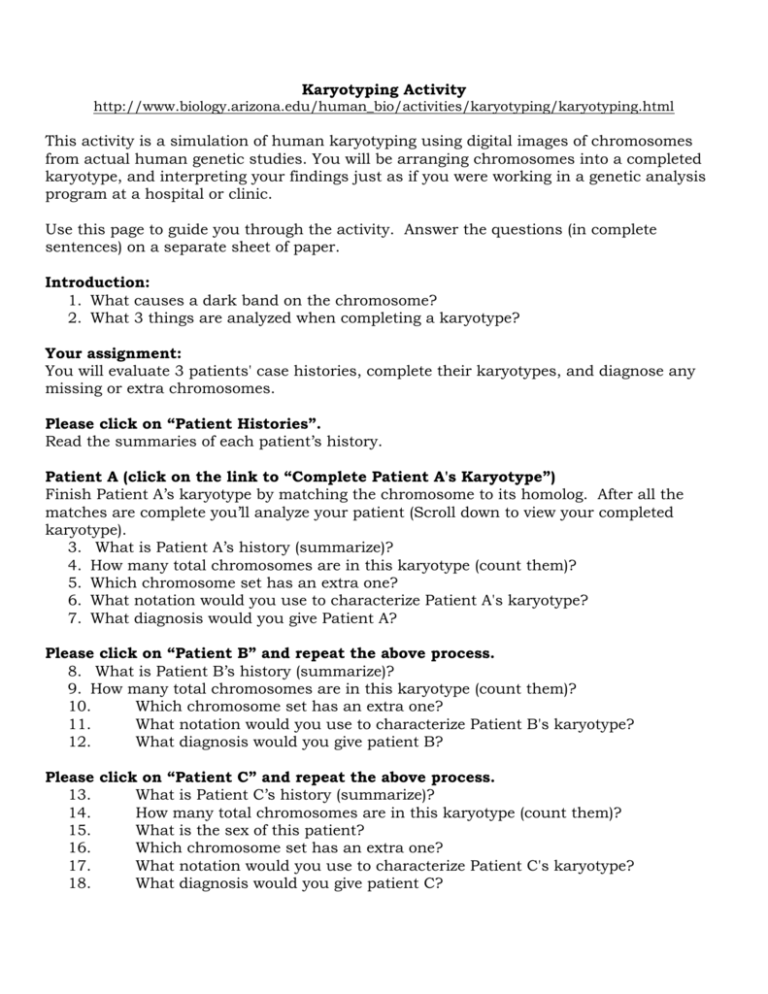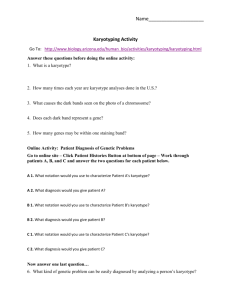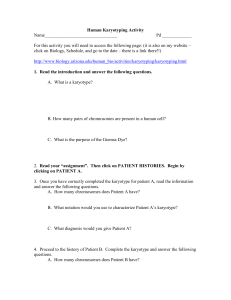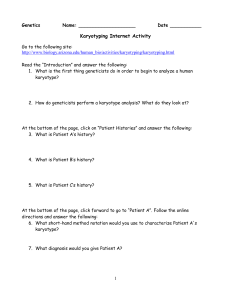Karyotyping Activity http://www.biology.arizona.edu/human_bio
advertisement

Karyotyping Activity http://www.biology.arizona.edu/human_bio/activities/karyotyping/karyotyping.html This activity is a simulation of human karyotyping using digital images of chromosomes from actual human genetic studies. You will be arranging chromosomes into a completed karyotype, and interpreting your findings just as if you were working in a genetic analysis program at a hospital or clinic. Use this page to guide you through the activity. Answer the questions (in complete sentences) on a separate sheet of paper. Introduction: 1. What causes a dark band on the chromosome? 2. What 3 things are analyzed when completing a karyotype? Your assignment: You will evaluate 3 patients' case histories, complete their karyotypes, and diagnose any missing or extra chromosomes. Please click on “Patient Histories”. Read the summaries of each patient’s history. Patient A (click on the link to “Complete Patient A's Karyotype”) Finish Patient A’s karyotype by matching the chromosome to its homolog. After all the matches are complete you’ll analyze your patient (Scroll down to view your completed karyotype). 3. What is Patient A’s history (summarize)? 4. How many total chromosomes are in this karyotype (count them)? 5. Which chromosome set has an extra one? 6. What notation would you use to characterize Patient A's karyotype? 7. What diagnosis would you give Patient A? Please click on “Patient B” and repeat the above process. 8. What is Patient B’s history (summarize)? 9. How many total chromosomes are in this karyotype (count them)? 10. Which chromosome set has an extra one? 11. What notation would you use to characterize Patient B's karyotype? 12. What diagnosis would you give patient B? Please click on “Patient C” and repeat the above process. 13. What is Patient C’s history (summarize)? 14. How many total chromosomes are in this karyotype (count them)? 15. What is the sex of this patient? 16. Which chromosome set has an extra one? 17. What notation would you use to characterize Patient C's karyotype? 18. What diagnosis would you give patient C?





